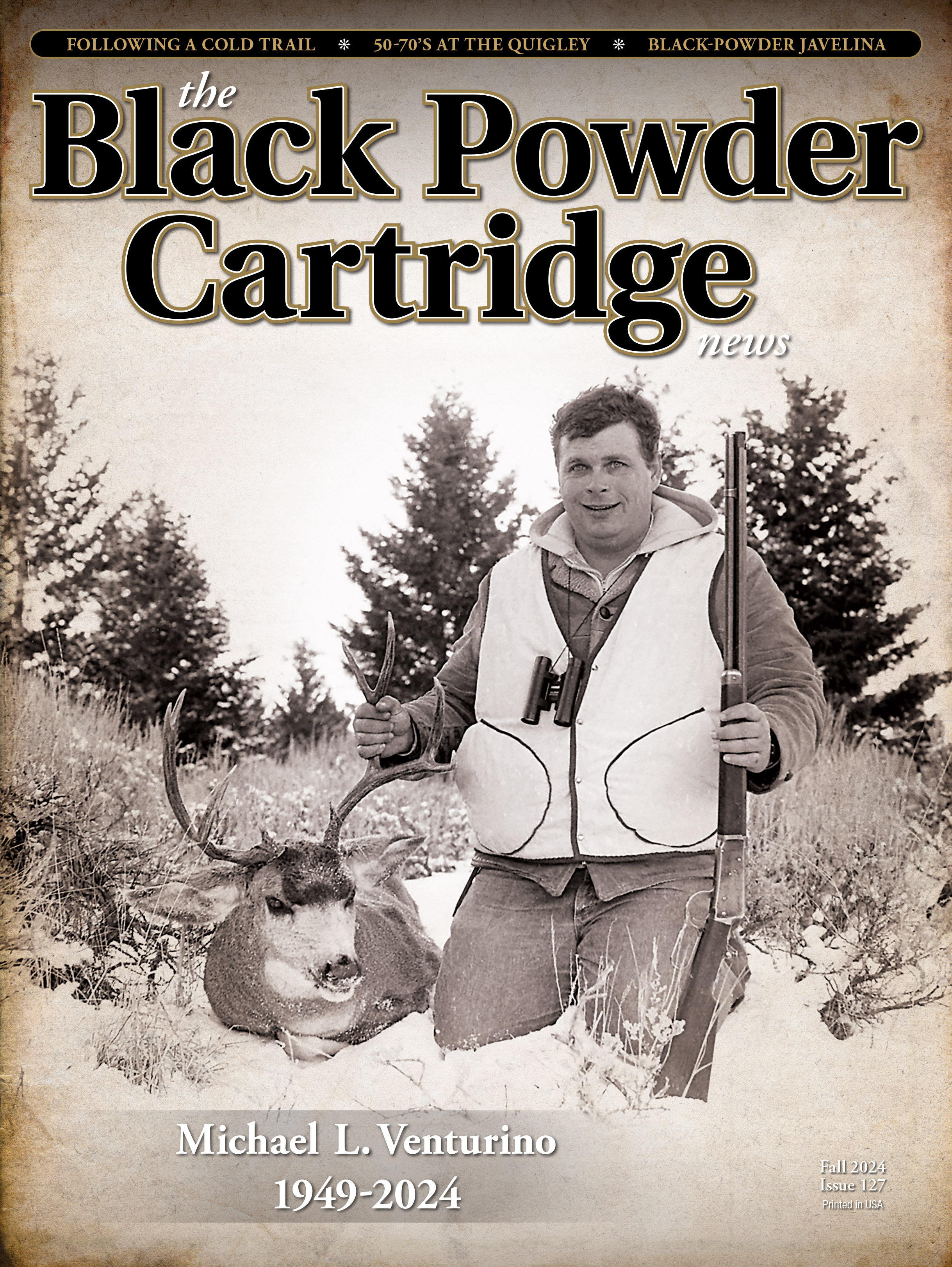Adding to Mike Nesbitt’s “Perfection”
feature By: John Farrar | September, 24
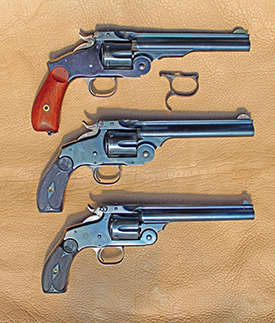
The S&W New Model No. 3 was the final, most refined, and arguably best top-break single-action revolver of the nineteenth century. Almost 36,000 were made between 1878 and 1908, and they continued to be sold until 1915. Unlike the predecessor top-break Russian revolvers, which were an ergonomic nightmare, you can easily cock the New Models without having to change your grip on the gun. The vast majority of these New Model revolvers were issued for the 44 Russian cartridge, but as Mike points out, the revolvers were also available in other calibers by the mid-1880s. In fact, the scarcest revolver Smith and Wesson ever produced was a New Model No. 3 in 38-40 between 1900 and 1907. Only 74 were produced, one of which was recently sold from Bill Goodman’s gun shop in Bozeman, Montana. The New Model No. 3 was finally surpassed by the “Triple-Lock Hand Ejector” which was first introduced in 1907, along with the new 44 Special cartridge. As Mike stated, in the overlapping period between 1907, and when the New Model No. 3 production ended in 1908, a few of the New Model No. 3 revolvers were produced in 44 Special.
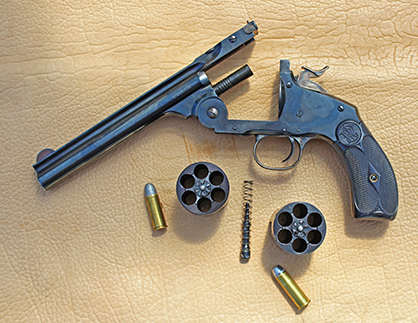
However, I felt sure that somewhere on the western frontier there must have been a cowboy packing a Smith &Wesson Frontier revolver and a Winchester 1873, both in 44-40. I have looked for evidence of this combo in historical literature but have been unsuccessful. Fortunately, actor Sam Elliot on the silver screen saved the day. The movie, “Conagher” starring Elliot in 1991, was in my opinion, one of the best westerns ever made. It accurately and poignantly showed the danger, desperation, and loneliness of a family’s efforts to carve out an existence on the frontier. It is also a great story of good versus evil, with even a moment of redemption for one of the later. There is the character Conagher, with what appears to be a S&W Model No. 3 revolver and Winchester 1873 Short Rifle, defending his boss’ cattle from the rustlers. After a fight with three Apache Indians, Conagher swaps two Indian rifles at a frontier general store for some ammunition. The storeowner says, “Here are two boxes of .44s to replace what got used-up in the fight.”
That sealed it for me, the quest was on! Somehow, I had to get a S&W New Model No. 3 (or replica) in 44-40 to go with my Uberti 1873 Short Rifle in the same caliber. The 44-40, or rather what I prefer to call the “44 WCF”, has always been my favorite caliber. For several years, “44 WIN” was my Montana Jeep’s license plate number; only because “44 WCF” was already taken by some other Montana fan of the caliber.
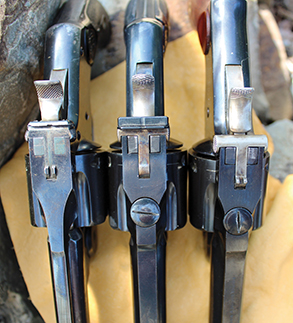
But would it shoot? I fired a couple of 44 Special rounds in it just to get a feel for the gun as it came from the factory. Then, in went the .44-40 cylinder for the last time and I have never looked back.
The hand-loading program was short and sweet. A classic 44-40 200-grain, flat-nose lead alloy bullet from Meister Bullets (SPG lubed) was teamed with 32.5 grains of Swiss 2Fg, a .030-inch Walters Wad, 1⁄16-inch compression, and CCI 350 Magnum Pistol primers in Winchester cases. This load went over the chronograph at an average (10 rounds) of 883 fps with a high of 912 fps and a low of 877 fps. At 25 yards, the five-shot group size was 2.3 inches.
Then, I went for a smokeless powder load that I knew was accurate in my Uberti 1873 Short Rifle. I used the same Meister bullet, 18.5 grains of Accurate 5744, Winchester Large Pistol primers in Starline brass. Ten rounds gave me an average of 891 fps with a high of 910 fps and a low of 878 fps. At 25 yards, the five-shot group size was 2.5 inches. This gun is the most accurate 44-40 revolver I have ever shot with these 80-year-old eyes.
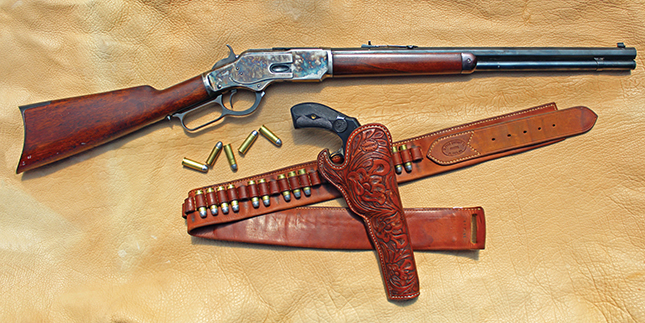
I now have my “Conagher 44-40s” to ride the range out here in Montana on my Polaris four-wheeler. I’m a happy cowboy!


